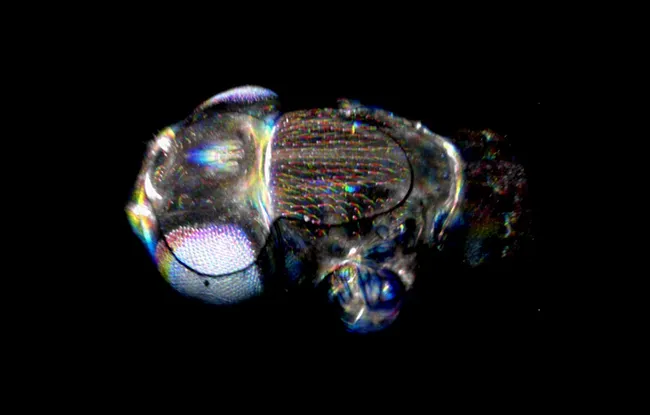- Home >
- Institut Curie News >
- Morphogenesis: when genetics and mechanics work together
Throughout the development of a multi-cellular organism, tissues form, adopting a morphology specific to the future function of the organ that they will constitute within the living organism. This morphology is a clear and fundamental property of the biological systems involving the organ and tissue function. The way in which the tension and the mechanical properties of the tissues cause shape changes is beginning to be well understood, but the issue remains of whether a given tissue geometry influences later morphogenesis and how this happens. In an attempt to answer this, the Polarity, Division and Morphogenesis team, led by Yohanns Bellaïche, Deputy Director of the Genetics and Developmental Biology unit (CNRS UMR 3215/Inserm U934/Sorbonne University) at Institut Curie studied this process in close collaboration with François Graner, a physicist at the Materials and Complex Systems Laboratory at Université Paris Cité.
We explored how curvature, a key indicator of tissue geometry, affects the dynamics of epithelial tissue invagination. We also uncovered the key elements to help us understand the formation of organs in three dimensions
Explains the team leader.
This study reveals a simple and reliable mechanism combining genetics and mechanics. We can take the example of a tightened cable. If it is straight, its tension does not create force on the side; if it is curved, it generates force towards the inside of the curvature. In the same way, in the fruit fly, at the intermediate stage between larva and adult, a cable made from molecular motors forms at the future location of its neck. And the curvature of this cable, combined with its tension, makes the tissue contract so as to form a narrow neck.
Through biology and physics, our interdisciplinary study of curvature has taught us more about the role of the geometry of tissues and about the links between geometry, organization of actomyosin and epithelial tension
Continues Yohanns Bellaïche.
To test this as-yet theoretical physical mechanism, the team used genetics or direct manipulation to alter the curvature and the tension. It was able to ascertain that a physical mechanism is indeed at work at this stage. The biologists also identified the genes that control the location of the cable and its tension, and describes the link between the mechanical forces and the genes involved - known as “homeotic”. These genes are shared by many animals as well as by humans.
Since curvature is a property of both healthy and diseased tissues, exploring its role in tumors could help us better understand how tissues are deformed in the presence of disease.
Research News
Discover all our news
Celebration
The Immunity and Cancer research unit (U932) celebrates its twentieth anniversary
12/12/2025
Artificial Intelligence
08/12/2025


